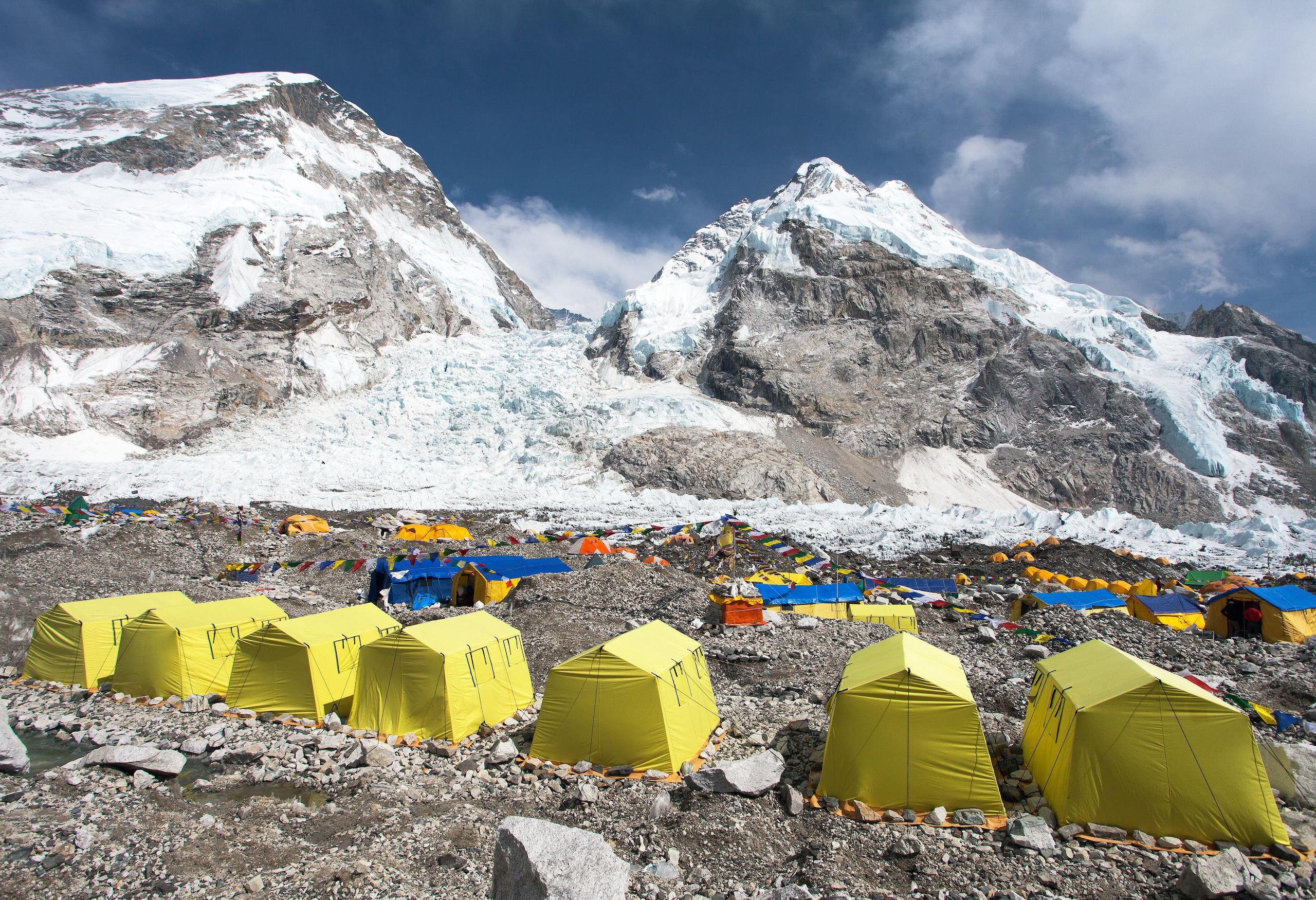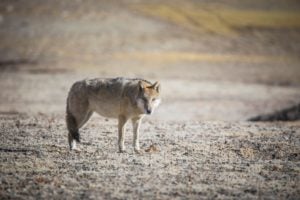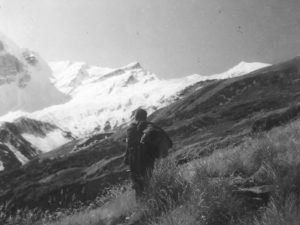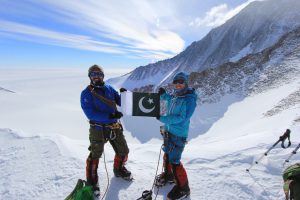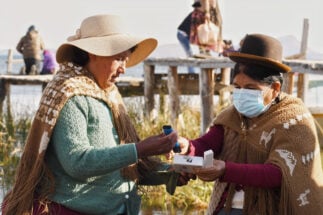Climbing Mount Everest – at 8,849 metres, the world’s highest mountain – is on many people’s bucket list. Even just reaching Everest Base Camp in northeastern Nepal, at 5,364 metres, is something few people achieve. Except for Kami Rita Sherpa that is, for whom climbing Everest has been a routine for over two decades, sometimes twice or even three times a year.
Born in Thame, a Sherpa village in the Everest region of Nepal, he started working as a porter for trekking companies when he was just 12. Now 52, Kami Rita climbed Mount Everest for the first time in 1994 when he was just 24. This year, Kami Rita reached the summit for the 26th time, a new world record.
On a sunny day in July, he spoke to The Third Pole in a café in Kathmandu. With monsoon clouds advancing from the Bay of Bengal towards the Nepalese capital, he had a bit of leisure time between the spring (pre-monsoon) and autumn (post-monsoon) climbing seasons.
The Nepalese government reportedly wants to move Everest Base Camp to a lower elevation, because of risks associated with climate change – including melting of the glacier the camp is located on – and an increasing number of climbers. But as Kami Rita explains, the plan is not supported by all.
What is your opinion about the government’s plan to move Everest Base Camp?
There is no valid reason to move it. Do you think climate change has impacted just Base Camp? What about the other camps [on the Everest route]? Where will you shift them? If you say climate change has impacted Base Camp, then don’t you think the other camps have also become riskier due to rapid melting of the ice?
Moving Base Camp will create chaos. The camps were established on the basis of the availability of a suitable place, identified through experience and practicality. If you move Base Camp lower, say to [the village of] Gorak Shep [at around 5,150m], then it will just be a stopover before the current base camp, as it’s nearly impossible to hike from the moved Base Camp to Camp I [at 6,150m]. And you can’t stay anywhere in between, as there isn’t any suitable spot except the current base camp. It will be just an added camp, not an alternative.
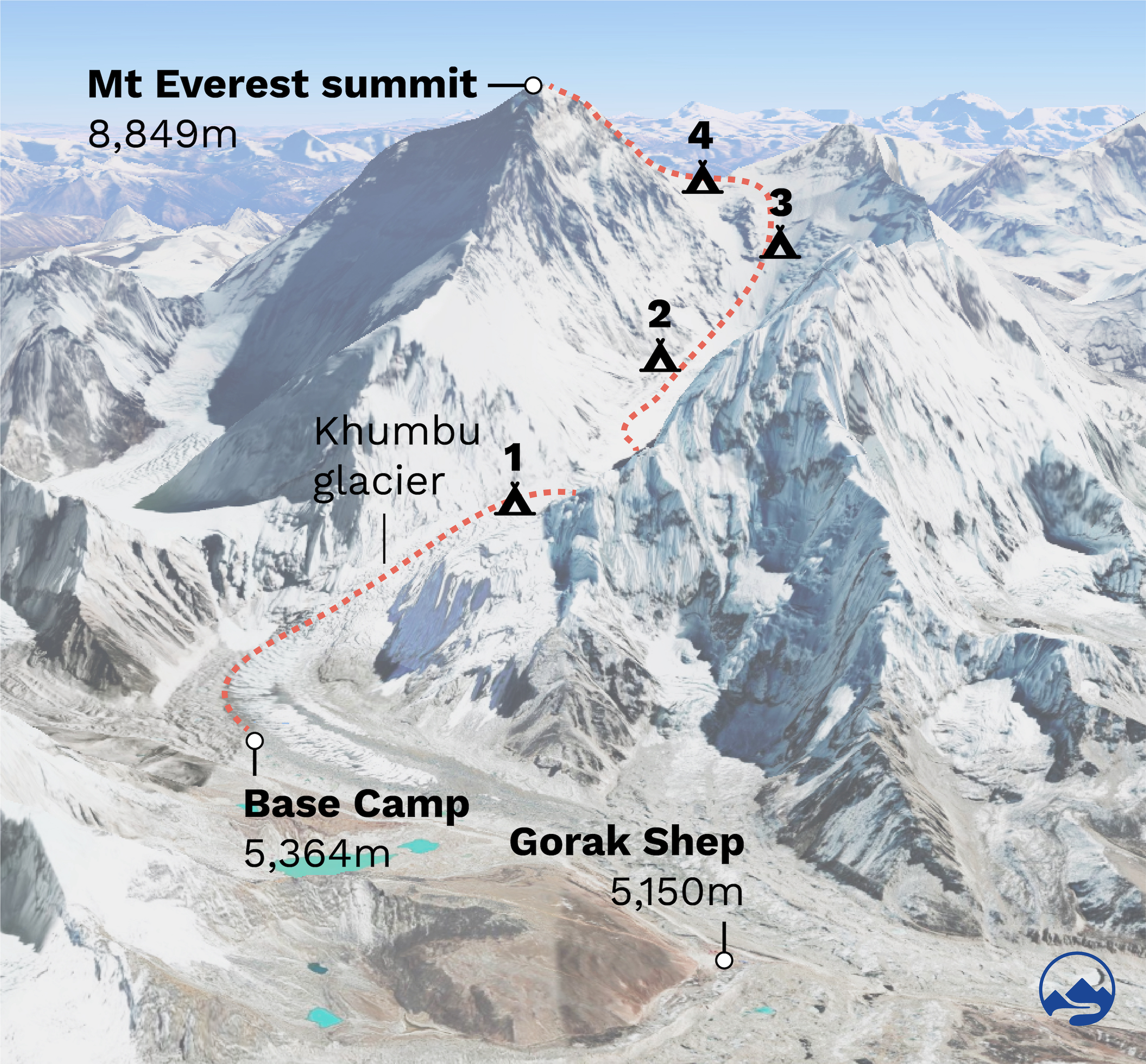
But the government says it’s becoming more dangerous, and that the decision would create a safer environment for climbers and climbing expeditions’ support staff.
I don’t really think Base Camp has become unsafe or less safe. I think it’s the safest point to camp for preparation before heading up and there isn’t a place nearby that’s more suitable. If you move down a little, it’s even more dangerous. Currently, Base Camp is on the edge of the Khumbu Glacier, and moving it down a bit will take you near the foot of Pumori mountain. That’s the place where an avalanche occurred during the 2015 earthquake and killed scores of climbers and Sherpas.
If you move it further down to Gorak Shep [where a flat area is available], which is over three kilometres south, then how would you provide water? There is no water source nearby and you must walk for an hour or so to get some water from the ice. Currently, Base Camp has meltwater [from glaciers], and even when there is no meltwater, we can crumble ice and melt it to drink. It would be nearly impossible to carry out expeditions at lower levels far from glaciers unless there is a continuous supply of water. It’s about feeding over 1,500 people for over two months [including climbers, porters and support staff], and we need a large amount of water every day.
The Everest climbing route, Camp I to IV, is on the Khumbu Glacier. Studies have shown that the glacier has been shrinking due to rapid melting resulting from global warming. How has this affected climbing?
Rapid melting exposes more rock on mountains and it’s harder to climb rock than ice-covered terrain. It also increases the chances of rockfalls that could cause serious injury or even death. I have noticed more exposed rock, and the length of rock [that has to be climbed] has increased in the past two decades. Between Camp III and Camp IV, there used to be about 50m of rock when I started to climb Everest, but now it’s over 70m.
Likewise, there is a spot called Geneva Spur [an anvil-shaped rib of rock] at 7,300m and more rock has now been exposed there, too. Between Camp IV and The Balcony [a small platform where climbers rest before the summit], there is a triangular face that used to [feature] about 100m of rock to climb, but now it’s about 130m. It’s quite rocky near the Hillary Step [a short rock face near the summit] and that has also increased in length.
What changes have you seen on Everest since you started climbing?
A lot. I can say that the amount of ice on Everest is less than when I climbed for the first time in 1994. Ice is melting at a faster rate and it’s moving [higher] up, but the bigger problem is that the timing of rainfall and snowfall has become irregular. In 1994 and the following expeditions for some years, it wasn’t normal to drink meltwater in Base Camp at the beginning of climbing in late April. We used to crack ice and then melt it to drink. But now you can get melted water not only in Base Camp, but often in Camp II. This year in April, we got water in Camp II. Now I feel like Camp II is the new base camp.
If shifting Base Camp is not a good idea, what do you think the government should do to ensure that climbing Everest in Nepal is safe and appealing?
I think if a decision is made [to move Base Camp], it will shift more climbers to China. It’s already expensive and challenging to climb Everest from the Nepal side. The Tibet side in China has a lot of facilities and it’s easier to climb from the northern side rather than the southern one. China has electricity and roads up to the base camp. You can go up to 6,500m on yaks. Why would someone come to the Nepal side if you prolong their stay without reason [by creating a longer route]?
Just doing things to make a news headline won’t solve the problem
Instead of moving Base Camp, the government could spend money on providing electricity at the camp, so that we can reduce the use of gas to cook food. [The use of gas canisters by climbing expeditions has been suggested as a factor in the warming of the area.] One expedition uses three gas canisters per day, and there are about 50 expeditions a year. One expedition takes around two-and-a-half months from Kathmandu and back, and most of the stay will be in Base Camp. You can reduce the use of gas if you provide electricity.
Secondly, the government can spend money on providing folding toilets to all expeditions so that we don’t have to carry them every time, and they can charge for the usage. They could invest in providing more reliable weather information and focus on clean-up campaigns [of rubbish left by climbers] along the trail up to the summit.
There are no permanent toilets along the Everest route in Nepal. Currently, climbing expedition companies use blue barrels, placed inside toilet tents.
When full, porters must carry these down to lower altitudes to be disposed of at dumping sites.
A local NGO, the Sagarmatha Pollution Control Committee, is mandated to monitor and manage this disposal.
Just doing things to make a news headline won’t solve any problem. There are many more things that could be done to create a safer climbing environment and save the mountains, but an easy [fix], like moving Base Camp down, is just a waste of time.
What is your message to the world, which has responded very slowly to reduce carbon dioxide emissions, causing snow and ice in the mountains to melt faster?
The mountains are not just ours. It’s not just Sherpas who would be impacted, or Nepal that would lose revenue from tourism [if the snow and ice melts]. It’s the source of water for billions of people. It’s the heritage of the world. If it’s gone, we are done. I think the only way to keep our mountains white is to reduce emissions from factories, planes and vehicles.
I remember the Dalai Lama saying that one day we will die because there won’t be water to drink. I feel like that will happen some day soon. I would urge the global community to think about it seriously and act immediately. I can’t do much as a climber, except inform people about the situation out there.
I just want to say that the ice on the mountains is vanishing. That’s my information based on experience and it’s up to you to make a decision.
